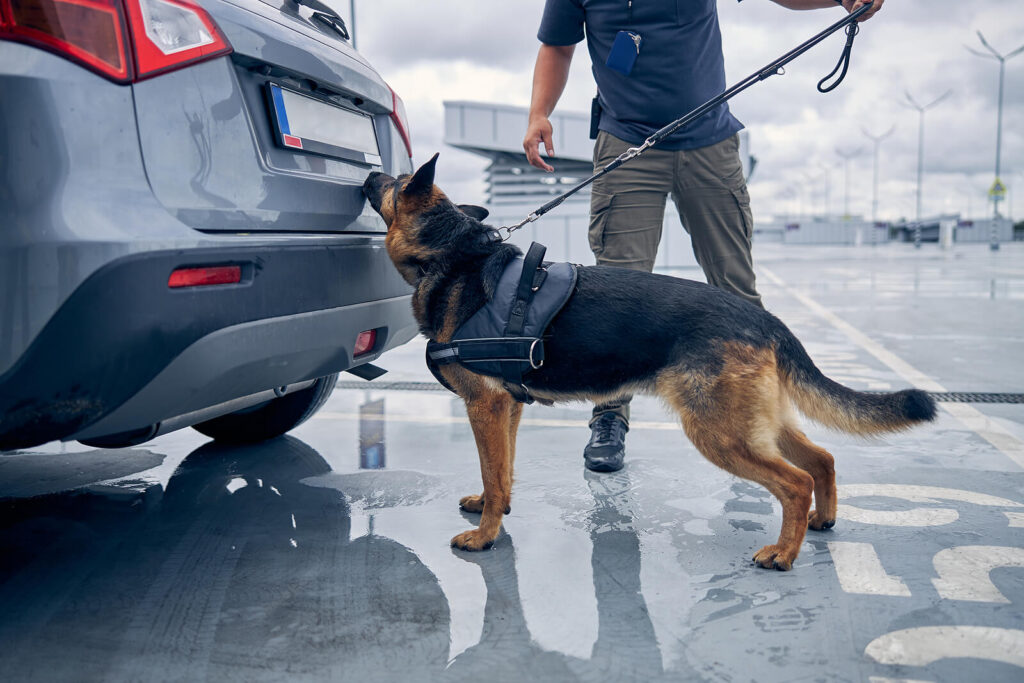The U.S. Department of Homeland Security recently issued a national terrorism advisory, warning of heightened holiday season threats — at the same time as federal agencies are experiencing a shortage of U.S.-bred dogs trained to detect explosives.
The need for these highly-trained frontline dogs is all too real. “Lone offenders and small groups motivated by a range of ideological beliefs and/or personal grievances continue to pose a persistent and lethal threat to the homeland,” the advisory says.
“In the coming months, DHS expects the threat environment to remain heightened and threat actors could exploit several upcoming events to justify or commit acts of violence. These targets could include public gatherings, faith-based institutions, the LGBTQI+ community, schools, racial and religious minorities, government facilities and personnel, U.S. critical infrastructure, the media, and perceived ideological opponents.”
Groups such as mine, which represents responsible dog breeders, and security experts have been ringing the alarm bell on these shortages for several years, but the government has been slow to address the problem.
In its first in-depth examination of domestically bred working dogs in 15 years, a government report acknowledged last year that the U.S. remains dangerously short of U.S.-sourced dogs that perform critical security duties such as bomb sniffing and narcotics interdiction.
The federal government “has faced a chronic shortage of domestically bred working dogs qualified for use by both the Department of Defense and other federal agencies. As adversaries, both peer and near-peer, become more adept in circumventing detection systems, the need for working dogs has steadily increased to address security vulnerabilities,” the 157-page report stated.
The shortage forces the U.S. to depend on foreign-sourced animals. “The lack of a robust domestic supply of working dogs creates increased supply chain risk and may threaten the ability of departments and agencies that utilize working dogs to maintain readiness if the supply from foreign markets is contested or interrupted for an extended period,” the report concluded.
The numbers underscore the vulnerability. The federal government currently maintains approximately 5,000 working dogs across several departments, including the Departments of Defense, Homeland Security, Justice, State and Agriculture. But only 7 percent are bred domestically, and the rest are imported. Another estimated 5,000 working dogs are deployed across local law enforcement and private facilities, with a similar low percentage bred domestically. The best dogs tend to be retained for use in Europe, where the U.S. finds itself competing against Russia and China for the same dogs.
Detection Dog Task Force takes aim at domestic shortage
Recognizing the problem early on, the American Kennel Club (AKC) established its Detection Dog Task Force in 2016 to help develop solutions. The task force has interviewed key participants involved in explosives detection, including experts from academia, government, military, policing, training and breeding. Subsequently, the AKC launched initiatives focused on developing a domestic program for detection dog breeding.
These efforts include a specialized pilot program that provides one-on-one assistance to breeders of Labrador Retrievers and German Shorthaired Pointers interested in learning how to raise a puppy suitable for advanced training as a detection dog. Auburn University, Johns Hopkins University and the University of Pennsylvania are also developing their own programs to improve domestic breeding of detection dogs. Meanwhile, the Department of Defense maintains a modest breeding program at its kennels at Lackland Air Force Base in San Antonio.
Such supply-side programs can go a long way, but the government procurement process needs an overhaul if the U.S. is to reverse the shortage. Part of the problem is bureaucracy. For example, the government report found that many domestic canine breeders have the capability to produce exceptional working dogs, but the “onerous procurement process of the government discourages vendors from supplying canines to the government sector of the market.” In addition, the government’s uncertain purchasing requirements – how many working dogs it will require over time — make solutions difficult to muster.
Making it easier for breeders to participate is essential because these dogs are not the same as family pets. Working dogs are unique animals, and it takes time and dedication to develop a viable pipeline. They require a combination of highly capable breeding and expert training to develop into potent partners in the defense against terrorism and as tools for law enforcement.
“Working dogs might need the strength to suddenly run fast, or to leap over a tall barrier, as well as the physical stamina to stand or walk all day,” a recent Government Accountability Office report found. “They might need to search over rubble or in difficult environmental conditions, such as extreme heat or cold, often wearing heavy body armor. They also might spend the day detecting specific scents among thousands of others, requiring intense mental concentration. Each function requires dogs to undergo specialized training.”
With American lives in the balance, and with threats on the rise, there has never been a more critical time for coming together and addressing this national security deficit.







